
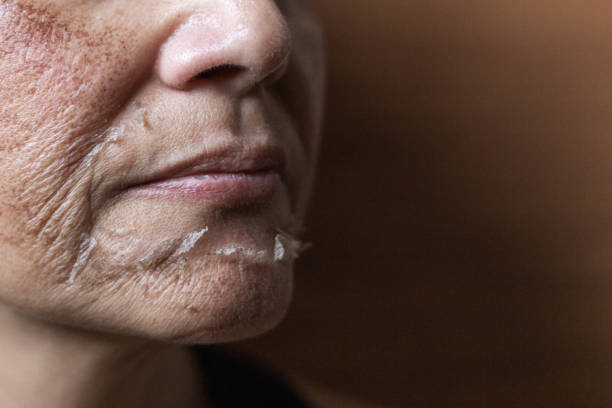
In this blog, we focus on how to treat hyperpigmentation after chemical peel, sharing expert insights and clinic-level guidance.
Why Does Hyperpigmentation Occur After a Chemical Peel?
Inflammation‑triggered pigment response
The peel induces controlled injury, which activates inflammatory mediators (e.g. prostaglandins, cytokines) that can stimulate melanocytes (pigment cells) to produce more melanin. This is a key mechanism behind postinflammatory hyperpigmentation (PIH).
Skin type & melanin predisposition
Darker skin types (Fitzpatrick III–VI) have inherently more active melanocytes, so they are more likely to develop pigment after injury.
Depth of peel / aggressiveness
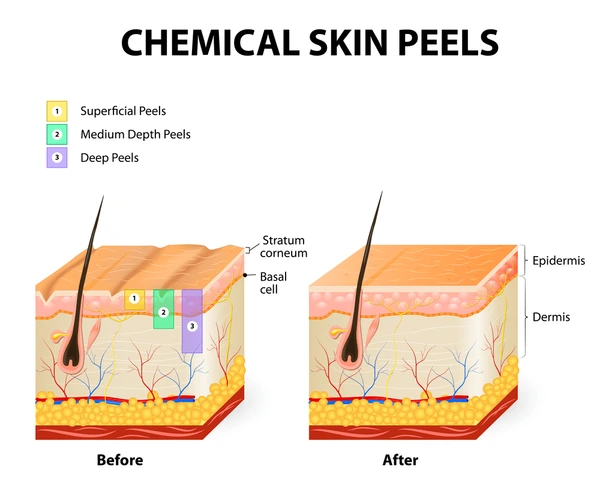
Medium and deep peels carry a greater risk of pigmentation changes, especially in pigmented skin, compared to superficial peels.
Inadequate sun protection
UV exposure during the healing phase can worsen, darken, or prolong pigmentation. Even minimal sun can exacerbate pigment production.
Delayed or improper care
Not using suitable topical agents or irritating the skin (scrubbing, harsh products) can aggravate pigment formation or delay resolution.
How to Identify Post‑Peel Hyperpigmentation
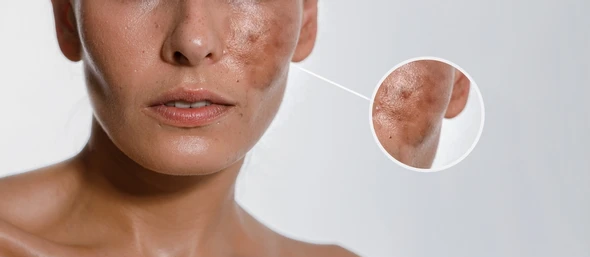
Let’s discuss the signs to watch for:
Appearance & timing
Darker patches or spots appearing a few days to weeks after peeling, often localized to areas of peel intensity.
Color variations
May range from light brown to dark brown or grayish hues, depending on the depth of pigment deposition.
Wood’s lamp / dermoscopy exam
A Wood’s lamp can help distinguish whether the pigment lies in the epidermis or deeper dermis (epidermal pigment often shows enhancement).
Medical history & documentation
Knowing exactly when and where the peel was done, what strength, and how the skin reacted helps correlate the cause.
No scarring texture change
Unlike scars, hyperpigmented patches are flat; the texture of the skin remains normal.
What are the best treatments for hyperpigmentation after a chemical peel? Let’s discover the most effective treatment options.
1. Topical depigmenting agents
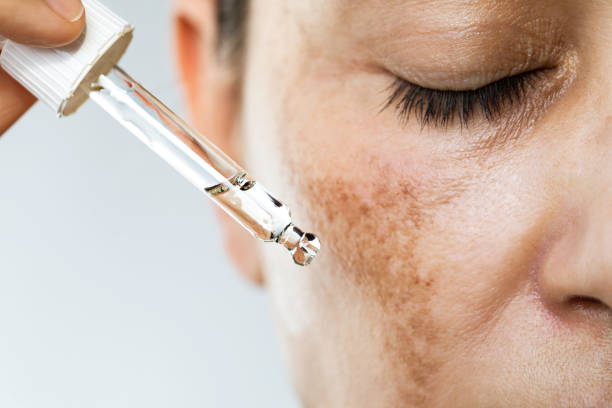
These are first-line and safest, especially early on.
- Hydroquinone (HQ) — The “gold standard” bleaching agent; typically 2–4% strength. Use cautiously under supervision because prolonged high use may risk ochronosis.
- Retinoids (e.g. tretinoin, adapalene) — Promote cell turnover, help exfoliate pigmented cells, suppress melanin synthesis.
- Azelaic acid — Helps inhibit tyrosinase; safe even in darker skins.
- Kojic acid, arbutin, licorice derivatives, niacinamide — Mild options, often used in conjunction with stronger agents.
- Combination formulas — E.g. triple combination creams (hydroquinone + retinoid + mild corticosteroid) may be leveraged under medical supervision.
2. Chemical peels (mild / targeted)

Once the skin is stable, light peels (e.g. superficial glycolic, lactic, mild TCA) can help accelerate pigmentation clearance — but carefully, since aggressive peels may worsen it.
3. Laser / light-based & energy devices
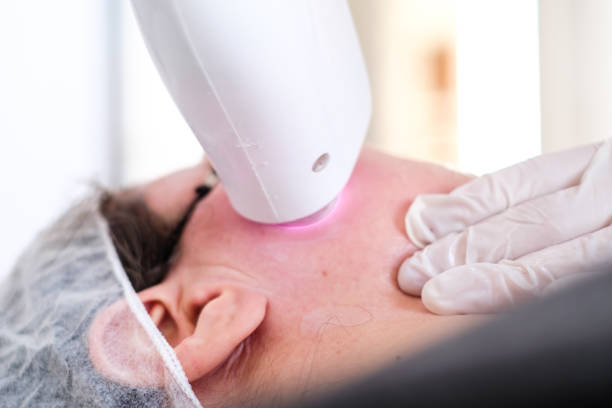
Used for more stubborn pigment:
- Low-fluence Q-switched Nd:YAG (1064 nm) is safer in pigmented skin for PIH.
- Fractional lasers (non-ablative) may help lighten deep pigment with lower risk, when done tactfully.
- IPL (intense pulsed light) or pulse-in-pulse modes may benefit some PIH cases.
4. Adjunctive antioxidants & agents
- Vitamin C / ascorbic acid — antioxidant, helps reduce melanin formation.
- Azelaic + niacinamide, soy derivatives, alpha‑arbutin, kojic acid serve as complementary support.
5. Strict photoprotection
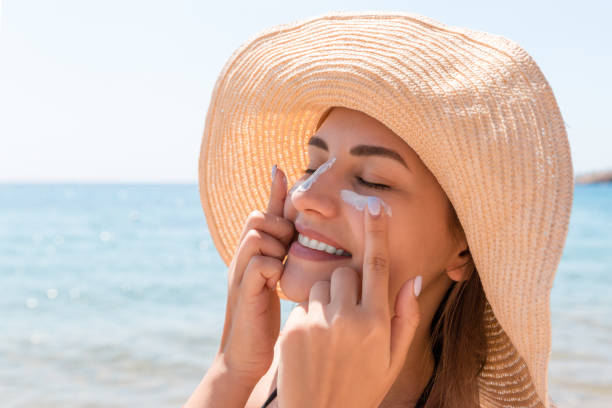
This is non-negotiable. Use a broad-spectrum sunscreen with SPF 30–50+ (preferably physical blockers like zinc oxide or titanium dioxide), reapply every 2 hours, and also wear protective clothing, wide-brim hats, and avoid direct sun window exposure.
Want a clear roadmap for your pigmentation treatment? Get in touch with an expert to create a customized plan for lasting results.
How can you manage hyperpigmentation at home? Let’s uncover the home care tips for fading pigmentation.
Home Care Tips to Manage Hyperpigmentation
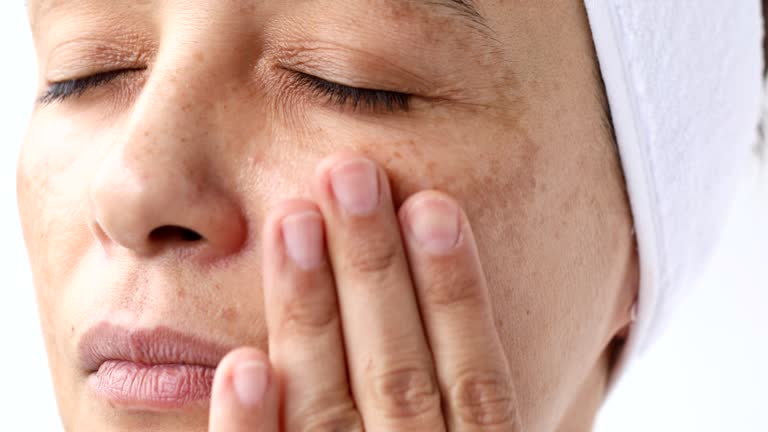
- Gentle cleansing
Use a mild, non-foaming, fragrance-free cleanser. Avoid scrubs or exfoliants until pigmentation improves.
- Moisturize consistently
A non-comedogenic, soothing moisturizer helps reinforce the skin barrier and reduce irritation.
- Avoid picking or scrubbing
Don’t peel or scratch flaking skin, as this can worsen pigmentation.
- Use targeted serums wisely
After the skin is stable, introduce vitamin C, niacinamide, or botanical brighteners gradually.
- Patch test new products
Especially on sensitive or healing skin, always test new actives on a small area first.
- Sleep, hydration & nutrition
Good rest, water, and a diet rich in antioxidants (fruits, greens) support skin repair.
- Sun-smart behavior
Beyond sunscreen, use umbrellas, stay in shade during peak UV hours (10 am–4 pm).
- Skip harsh ingredients initially
Until pigmentation is under control, avoid strong retinoids, acids, and vitamin A derivatives unless recommended by your dermatologist.
Let’s discuss when it’s time to seek professional help.
When to See Your Doctor
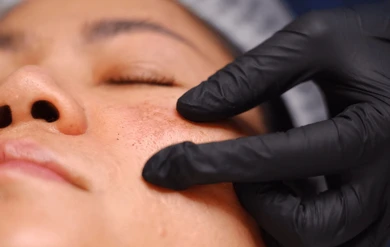
- If pigment patches worsen or spread rather than fade.
- If discoloration shows signs of raised texture, inflammation, or scarring.
- If the pigmentation remains unchanged after 3–6 months of topical therapy and strict sun protection.
- Before trying lasers, peels, or stronger treatments — especially for deeper, recalcitrant pigment.
If you see irregular borders, uneven color, suggesting atypical lesions (to rule out other pigment disorders).
Ready to find the right treatment for hyperpigmentation? Connect with a specialist for personalized recommendations.
Conclusion
Treating hyperpigmentation after a chemical peel demands patience, consistency, and a strategic approach. Begin with gentle care, strict sun protection, and safe topical agents. Then, as skin stabilizes, evaluate whether mild peels or energy-based therapies are appropriate. Overenthusiastic treatment or skipping sun care can worsen pigment instead of improving it. With expertise and guidance from seasoned experts like Dr. Deepesh Goyal, you can safely navigate this healing journey and restore a more uniform, luminous complexion.
Frequently Asked Questions
1. Will hyperpigmentation fade on its own?
In many cases, yes mild pigment may fade over months but treatment can accelerate clearance and reduce its permanence.
2. Can I use retinoids right after the peel?
Not immediately — wait until the skin barrier is restored and irritation is minimal before gradually reintroducing.
3. Do I need laser treatment for post-peel pigmentation?
Only if pigment is persistent despite topical therapy and sun protection. Laser options must be chosen carefully to avoid worsening pigment.
4. Will pigmentation return after treatment stops?
It might, especially if sun protection is lax — maintenance therapy is often needed to sustain results.
5. Is post-peel hyperpigmentation permanent?
Rarely permanent if treated promptly — delayed or untreated pigment may persist longer.
References:
https://www.clinicspots.com/question/how-to-treat-hyperpigmentation-after-chemical-peel
https://www.healthcentre.org.uk/cosmetic-treatments/chemical-peels-hyperpigmentation.html
Disclaimer: The information shared in this content is for educational purposes only and not for promotional use.

